A WHEELCHAIR IS NOT SLOWING ROBERT WICKENS
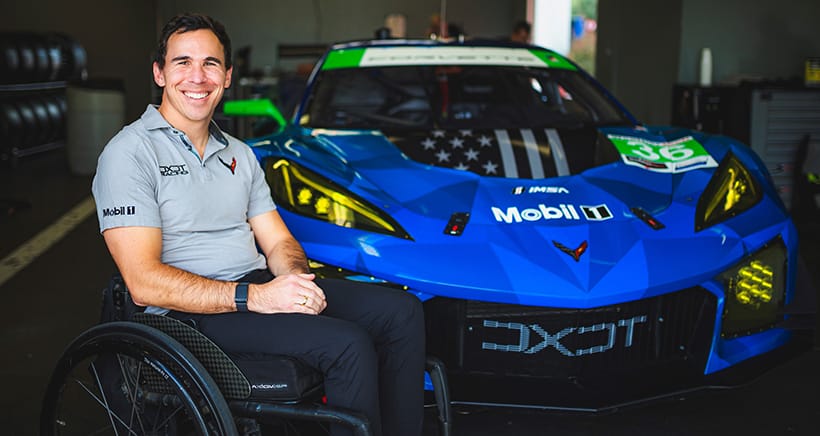
Former IndyCar racer Robert Wickens has his eyes back on the big prize – the Indianapolis 500 – after a breakthrough development in disabled driving.
Even though Wickens can longer walk, the man sure still knows how to drive and is taking another big step forward in 2025.
He will be racing a GT3 Ferrari in the IMSA sports car series in the USA after winning with a Hyundai TCR car in 2024.
So, in what has to be the motorsport feel-good story of the year, Wickens, who was crippled after an horrific IndyCar crash back in 2018, is back in the big league.
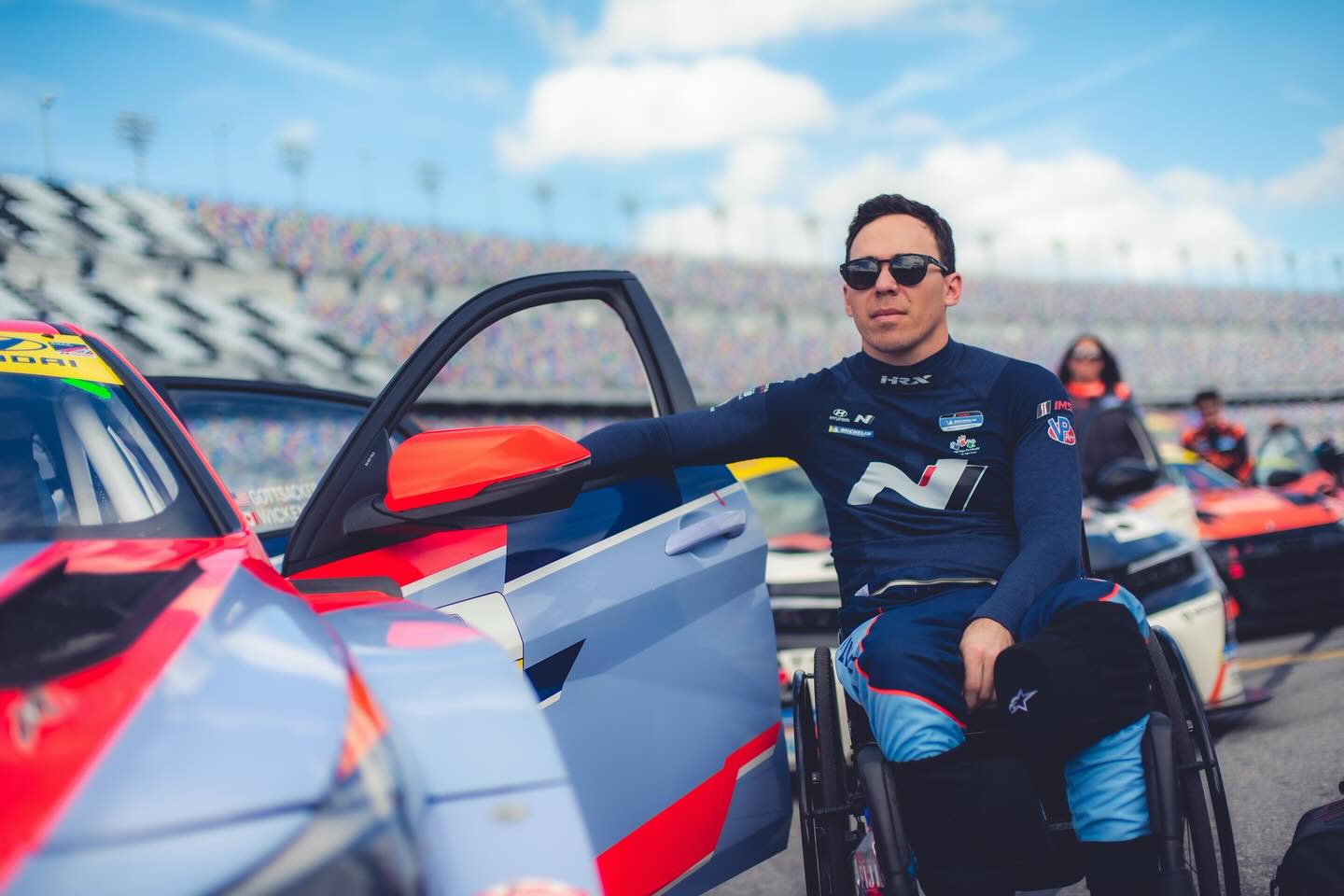
Our homegrown F1 hero Mark Webber may have made the internet handle 'Aussie Grit' his own, but Canadian-native Wickens is, arguably, even, err, grittier.
But let’s not argue over it – movie star John Wayne had True Grit.
After several years of prodding, pushing, asking nicely and challenging the engineers, auto giant Bosch has developed the most advanced hand-controlled system yet for disabled drivers to allow Wickens to again race in a premier category.
Using the technology developed from its involvement in both IMSA and the WEC –particularly its ground breaking brake-by-wire ABS system – Bosch has conjured up the most sophisticated hand control system ever produced.
It's one that has the feel, feedback and sensitivity of a set of pedals.
The investment in all this? Millions and millions of dollars, countless hours of engineering and computational expertise and a goal to change the game for disabled drivers.
The payoff? Robert Wickens, one of the talents of his generation, is back in the big show and the door is open for other disabled drivers to aspire to greatness as well.
Hey, everyone is a winner in this.
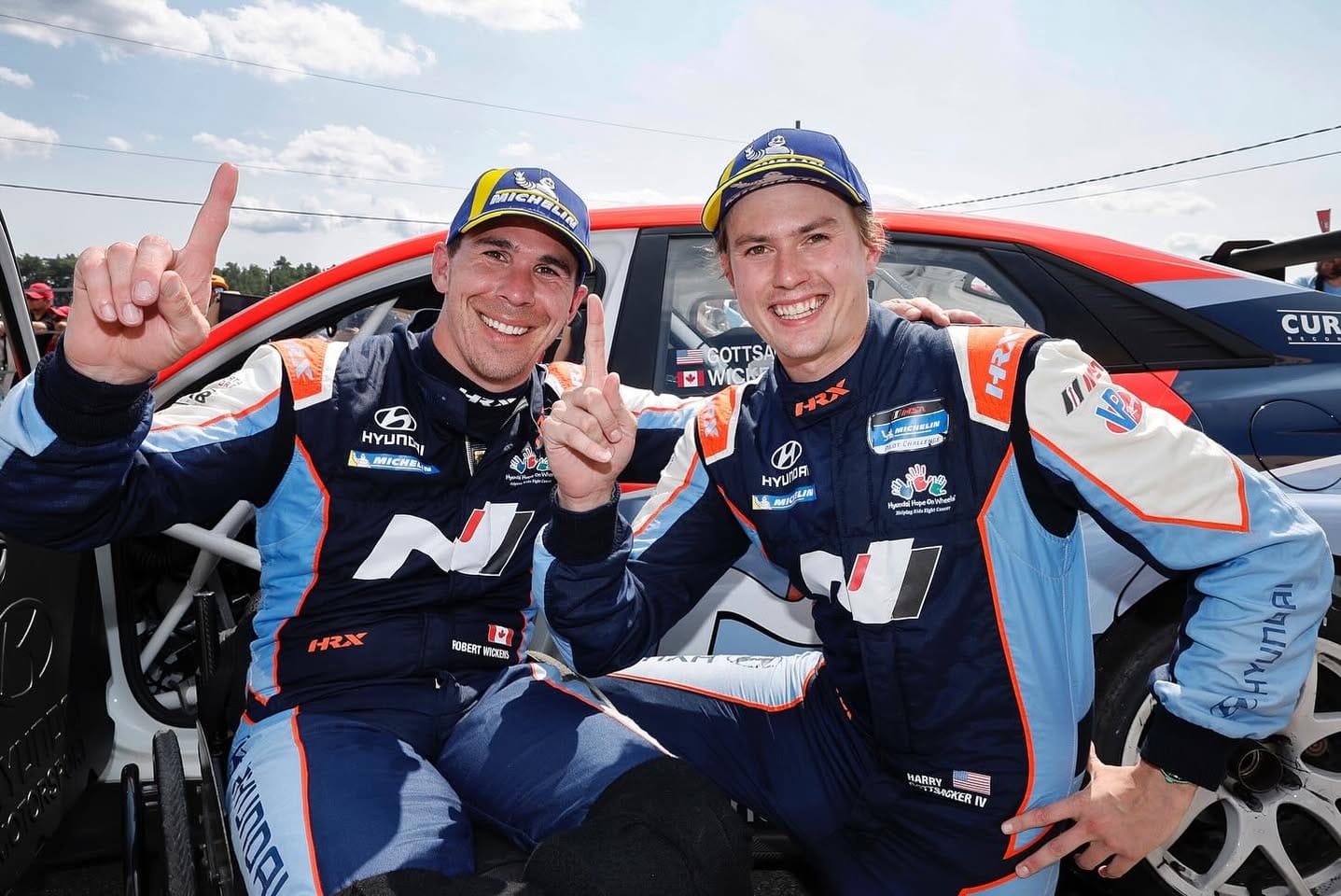
Last year Wickens won the US TCR championship in a Bryan Herta (IndyCar winner and father of Colton) Autosport prepared and hand-controlled Hyundai Elantra. Towards the end of the series Wickens tried out the new Bosch system and, yippee . . .
Now he’s managed to score a ride in the IMSA WeatherTech championship in the GTD class with DXDT Racing in its Chevrolet Corvette GT3.R
"I’ve been wanting to move up into WeatherTech series for quite some time – I felt like I was fairly transparent in that messaging – but it was always a difficult communication," admits Wickens.
"Trying to convince the OEMs (car makers) or the team owners to, one, put me in the car like any other racing driver; and then say, 'Oh, by the way, you have to design a whole braking system that doesn’t exist'. So the fact that Bosch came to the table with with their technology, it’s already proving that it’s giving me the opportunities that I want in my career," he smiles with childlike delight.
Now let’s not get ahead of ourselves here, for a race-ready Corvette with the Bosch hand control system is still under construction and probably won’t be ready for testing for a little while, but the build team at Pratt and Miller have produced a prototype.
"This is going take some time," explained Wicken in a recent interview. "But I know if anyone’s going to do it, it’s GM, Bosch and Pratt Miller. So I know I’m in good hands.
"I’ve seen the 3D-printed rapid-production concept of the steering wheel and the hand controls and kind of fine tuning stuff. It’s tailor-made, really, so it’s a unique situation. Not many drivers can tailor-make their throttle and brake and everything to how they want unless you’re driving in Formula 1 or something, so it’s been a cool journey so far."
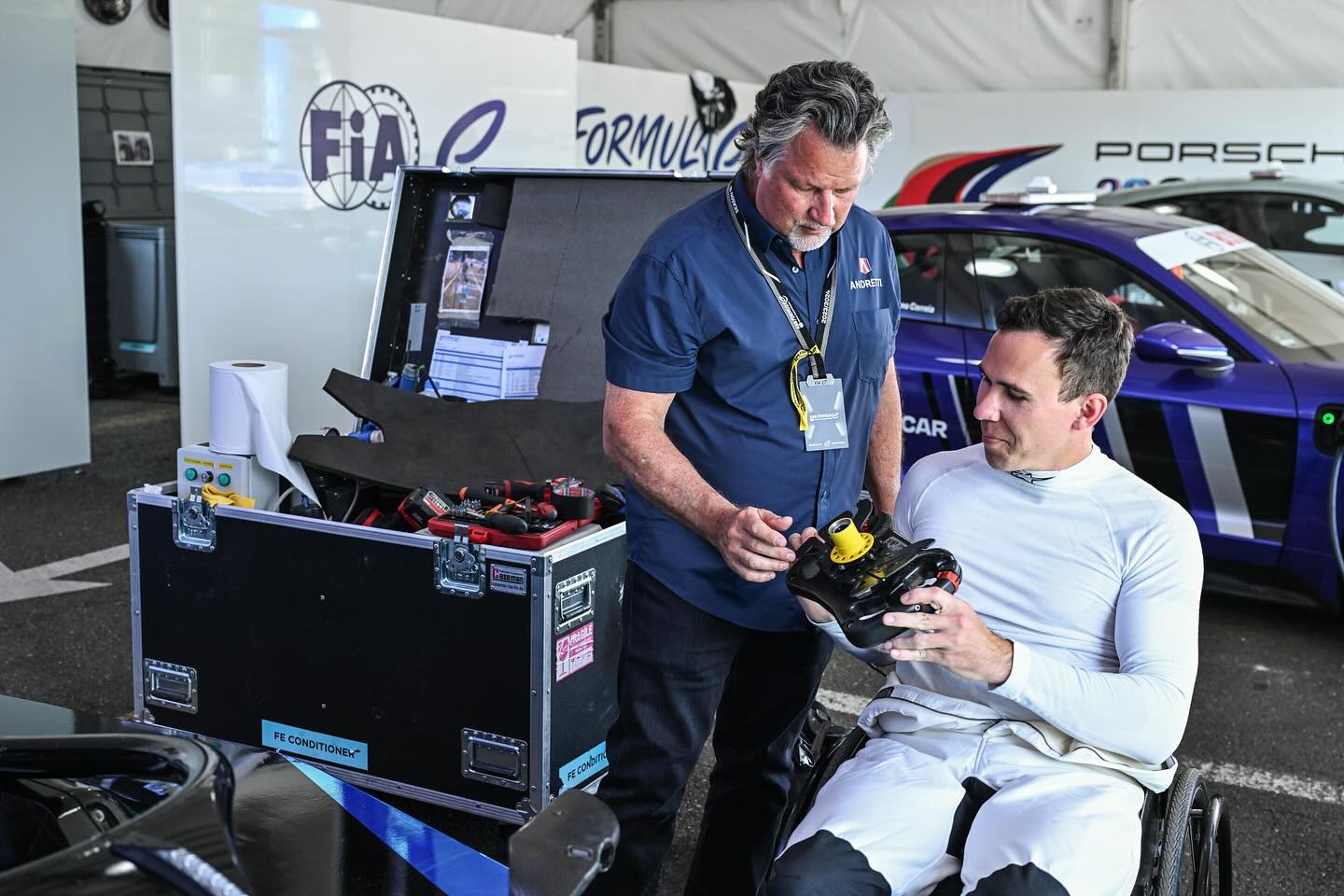
For obvious reasons, given his disability, Wickens will only contest the sprint rounds of the WeatherTech championship. The endurance races obviously require driver changes, which remain a hurdle yet to be cleared but in the works for the future.
That means he wasn't on the grid for the season opening Daytona 24 Hour epic in January, instead debuting the Corvette at Long Beach in April.
"Having my season kick off in Long Beach is going to be a little bit of a baptism by fire for sure," he laughed.
"Why not learn IMSA WeatherTech racing at a track with no run-offs and walls everywhere? The whole thing’s just going to be fun. Honestly, I think there’s definitely more excitement than nerves."
So, let’s just see how we got here in the first place.
Wickens was into his first IndyCar season with Schmidt Peterson Motorsport, which is now Arrow McLaren, after a few years in the DTM, and was already being hailed as the 'next big thing'.
Joining his best mate and fellow Canadian driver James Hinchcliffe was his big chance to again showcase his open-wheeler talents after his F1 aspirations were derailed by (you guessed it) big dreams hampered by small budget.
In his opening season with SPM he had already racked up four podium finishes and one pole position and was being hailed as the 'man most likely' for a title run in his sophomore year.
But then came the dauntingly-fast Pocono circuit in Pennsylvania. This is a rather unique triangular superspeedway that almost dares the drivers to be brave and try the high line to reach ridiculously-high speeds.
For Wickens it all went wrong – at warp speed – but he still has no recollection of the crash itself.
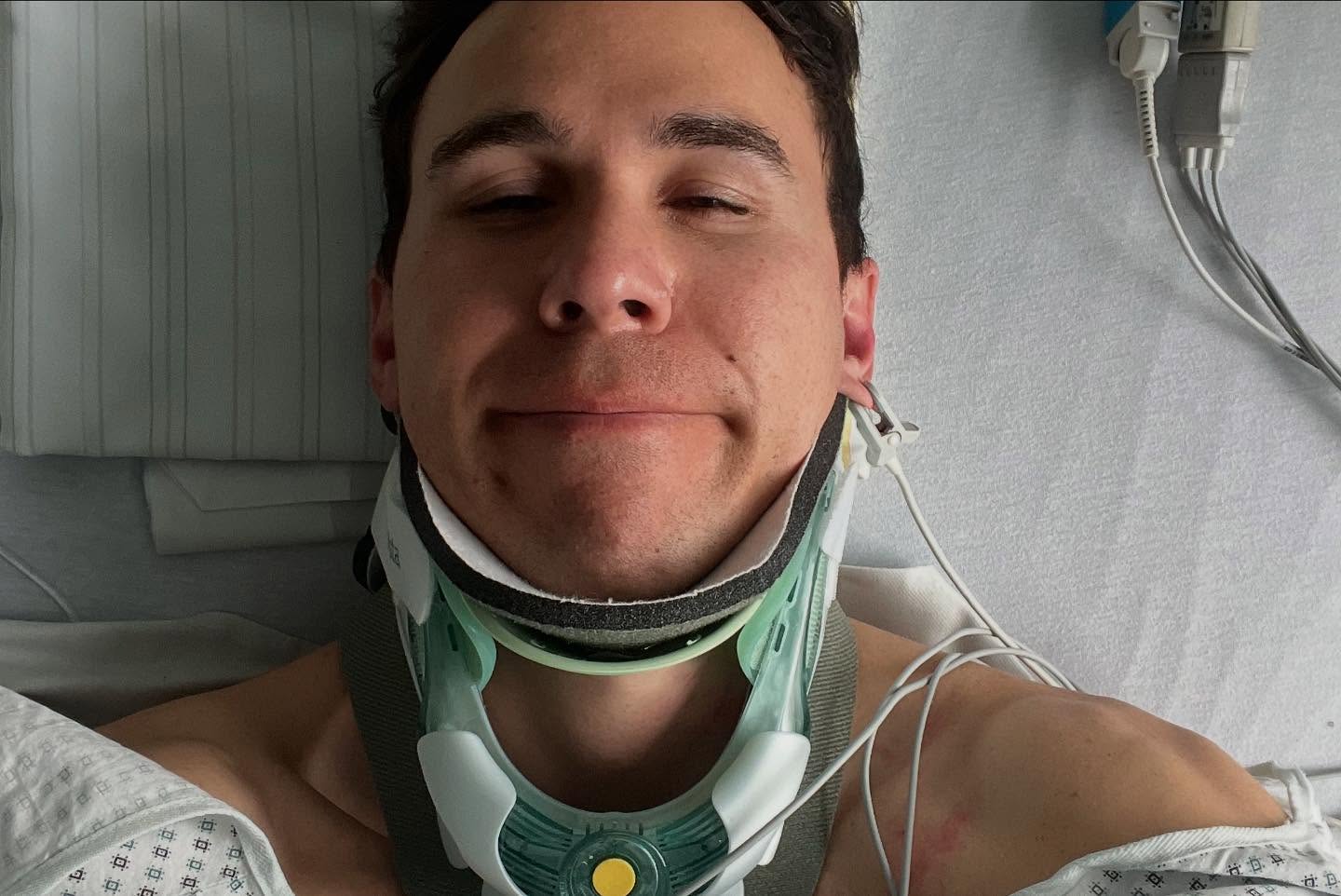
He remembers "not much, not much at all".
"I remember going to the inside of Ryan Hunter-Reay and . . ."
If you are so inclined, you can go to YouTube and watch what happened next. Wickens’ car clipped the rear of RHR’s yellow DHL Dallara and launched, slamming into the catch fencing while spinning, hitting a steel pole and being thrown back onto the track.
"Fence poles, well they don’t move," he says.
When Wickens was eventually extricated from what remained of his Dallara he was about as broken as a human being can be and still have signs of life.
Let’s just touch on the biggies in no particular order. Of course the biggest was the thoracic (mid-back spinal) fracture. But both his hands were also smashed, his tibia and fibula in both legs broken, one elbow was shattered, his neck was fractured as were a number of his ribs and, oh, there was some major head trauma.
This is like a list of multiple casualties from a bus crash rather than what can happen to one person in the blink of an eye.

"I’ve been told I went from 212mph (340km/h) to zero in six tenths of a second,”" says Wickens.
He was in an induced coma for, as he says, "seven or 10 days", yet when he woke up he almost immediately said he wanted to get back in a racecar "as soon as possible".
"I don’t know when it even dawned on me that I was paralysed," he admits.
But that’s all in the past for Robert Wickens. He was, is, and will remain, a racing driver – disabilities be damned.
“It’ s what I do. I have few other skills," he adds with a laugh.
And so don’t even think, not for a moment, that his IMSA drive in a Corvette will see him satisfied.
"You know," he smiled, "I’d like to do one more Indy 500."

